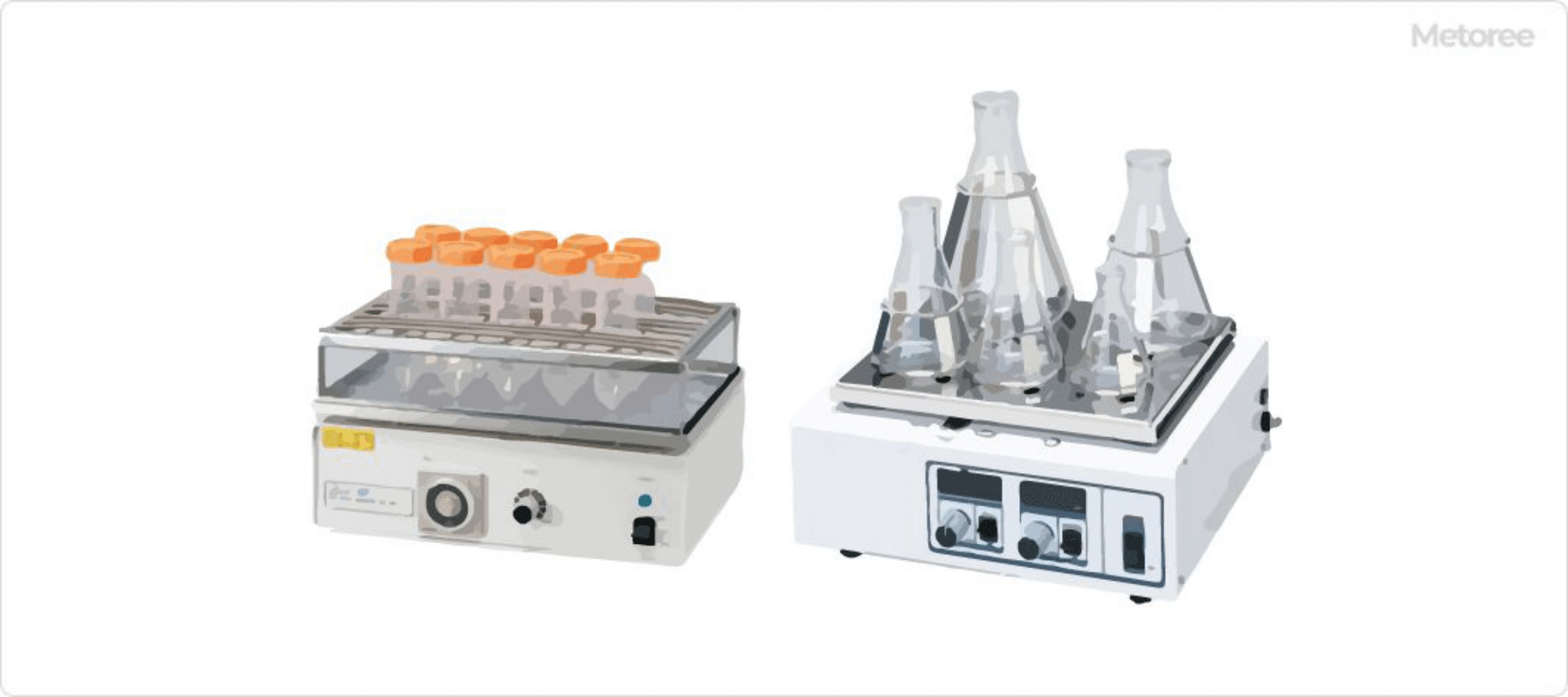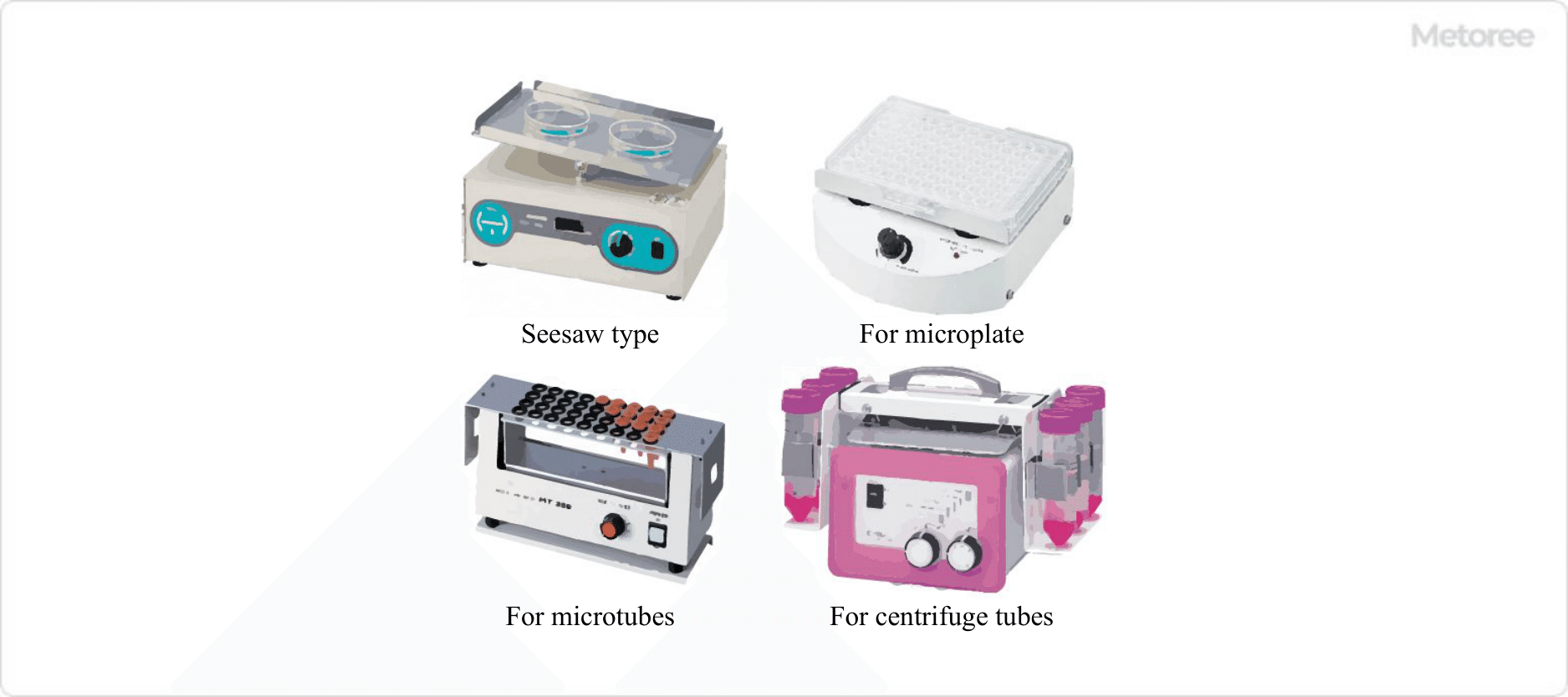What Is an Orbital Shaker?

Figure 1. Image of a typical shaker
A shaker is a device for stirring a sample by shaking a container, such as a test tube, triangular flask, or aliquot funnel at regular intervals.
It is sometimes also called a shaker. The size of the sample holder, the intensity of shaking, and the upper limit of heating temperature vary depending on the device. It is necessary to select an appropriate orbital shaker according to the experimental conditions and the number of samples.
Uses of Orbital Shakers
Orbital shakers are used in testing and research applications. They are commonly used in life science and chemical experiments where constant shaking is required for extended periods of time.
In biochemistry, applications include DNA and RNA extraction, in which small vessels such as microtubes are used. In immunoprecipitation and Western blotting, orbital shakers are used in the form of seesaw shakers that use Tupperware or similar vessels.
In chemical experiments, besides stirring during reactions, the shaker is also used to separate the layers during extraction. Other applications include dissolution testing in environmental and soil testing, food allergen testing, and food pesticide residue testing. In these cases, shaking must be performed in accordance with official test methods (e.g., official methods for food allergen testing, etc.), so it is appropriate to use a compliant product.
Principle of Orbital Shakers
An orbital shaker has a power unit built into the base at the bottom of the shaking table. The power unit transmits power from the motor to the pulleys via a belt, which converts the rotation of the motor into a reciprocating motion of the shaking table.
Compared to the stirring of a magnetic stirrer, the stirring force is generally weaker. Orbital shakers, on the other hand, have the advantage that they can be used to shake very small vessels, such as microtubes, which do not accommodate stirrer tips.
Shaking also makes it possible to extract samples from solids immersed in a solution. Some devices also provide sample holders so that numerous samples can be shaken at one time.
Types of Orbital Shakers

Figure 2. Shakers used mainly in biochemistry and other fields 1
Types of orbital shakers can be classified according to the type, available vessel, size, and application.
1. Type of Shaker
Depending on the product, the type of shaker can be reciprocating, swiveling, or seesaw, and the direction of shaking can be horizontal or vertical. The speed is also adjustable, but whether it is step or non-step depends on the product. Some products have a built-in timer.

Figure 3. Shaker used mainly in biochemistry and other fields 2
2. Usable Vessels
Various types of containers are available depending on the product. The main types of vessels include well plates, microtubes, test tubes, centrifuge tubes, and vials. Larger vessels include aliquot lots and triangular flasks. Seesaw-style products are mainly used with tupperware or petri dishes on top.
Various types are available, such as those in which containers are set with claw clamps, or those that are simply placed on a stand. The spring-net type, in particular, is highly versatile, as it can be easily attached regardless of the shape of the container. Depending on the product, usually several containers can be attached.
3. Size of the Orbital Shaker
The size of the orbital shaker itself can range from small to medium tabletop to large floor-mounted stationary shakers. Some of the larger floor-mounted models can be fitted with two-tiered triangular flasks.
4. Specific Applications
For elution tests and food allergen tests required by official laws, there are dedicated, strong orbital shaker products that comply with various laws and regulations. For these applications, dedicated products should be used.
Orbital shakers integrated with thermostatic chambers are also used when microorganisms are to be cultured. Other specialized products include shakers for high humidity. These products are intended for use in extremely humid environments, such as inside CO2 incubators.